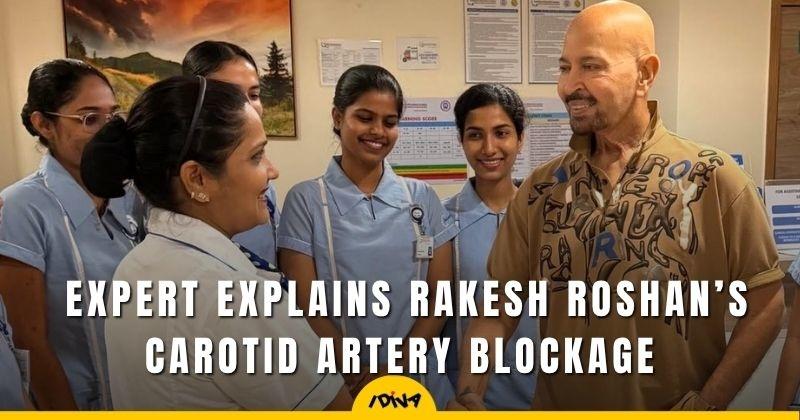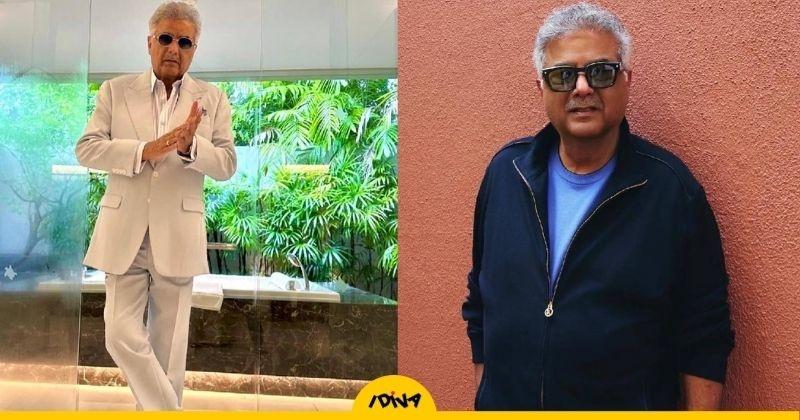Rakesh Roshan took to Instagram to share a sudden health scare he recently experienced. He posted a picture with the staff of the hospital where he underwent treatment.
Rakesh shared that he had blockages in his carotid arteries, which could have resulted in serious complications and posed dangers to his life. Keep reading to check out his post and a very stark reminder of taking health screenings seriously.
Rakesh Roshan underwent carotid angioplasty recently
Credit: Instagram/rakesh_roshan9
Rakesh Roshan recently shared that both his carotid arteries were found to have 75% blockages. He discovered this through regular health check-ups and tests, as he had no symptoms. He added that he underwent the required treatment at the earliest, and is currently recovering at home.
Rakesh shared a picture with the staff of the hospital and wrote in the caption, “This week has been truly eye opening, during a routine full body health check up the Dr conducting the sonography for the heart suggested I also do one for the neck. By chance we found out that although asymptomatic, both my carotid arteries to the brain were above 75% blocked. Which if ignored could be potentially dangerous. I immediately admitted myself into the hospital and got the preventative procedures done. I am back home now fully recovered and hope to get back to my workouts very soon.”
He urged everyone, especially those above 45-50 years of age, to get regular health check-ups done, underlining that heart CT scans and carotid artery sonography shouldn’t be neglected.
He added “I hope this inspires others to stay on top of their health especially where the heart and brain is concerned. A heart CT and a carotid brain artery sonography (which is often ignored completely) is a must for everyone above 45- 50 years old. I think it’s important to remember that prevention is always better than cure. I wish a healthy and aware year to you all.”
Expert explains what it means when one has blockages in carotid artery and how it is detected
Rakesh Roshan’s health scare is a stark reminder of the fragility of one’s health and how important it is to take care of every minute detail as one ages. Especially in cases like carotid arteries blockage, which is not as commonly heard as heart blockages.
To get more information, we spoke to cardiologist Dr. Abhijeet Palshikar, Director – Cardiology, Sahyadri Super Speciality Hospital, Deccan Gymkhana, Pune, about carotid artery blockage, the risk groups, its symptoms, and ways to prevent it.
Talking about the procedure, Dr. Palshikar said that carotid angioplasty is done to blocked carotid arteries. They are one of the most significant blood vessels in the brain, as they enable the flow of oxygen-rich blood to the brain.
He said, “Carotid Angioplasty is a procedure used to treat blocked or narrowed carotid arteries in the neck. The carotid arteries are important because they carry oxygen-rich blood to the brain. When these arteries get blocked or narrowed, it can limit blood flow to the brain, which increases the risk of having a stroke.”
When asked how one can detect blocked carotid arteries, Dr. Palshikar listed out the necessary tests. “Usually, patients with stroke or TIA undergo Carotid Doppler, which can reveal blocks. You need to undergo Digital Subtraction Angiography (DSA) to confirm. If DSA confirms the block, then you need Carotid Angioplasty,” he said.
Talking briefly about the procedure, he added, “During the procedure of Carotid Angioplasty, we make a small cut in your groin to insert a small tube (called a catheter). The tube is carefully guided up to the blocked artery in the neck. Once it reaches the blocked area, a small balloon at the tip of the tube is inflated to open up the blocked artery.”
“In some cases, the doctor will also place a small metal mesh tube (called a stent) to keep the artery open after the procedure. The whole process is done with local anesthesia, so you’re awake, but you won’t feel pain. Carotid angioplasty is a less invasive option compared to traditional surgery, called carotid endarterectomy, where the plaque is surgically removed.”
Who is at high risk of carotid artery blockage?
Dr. Palshikar spoke about the risk factors associated with carotid artery blockage. He said the risk increases as one ages, so those who are above 60 are more likely to develop this condition. He also said there are several lifestyle factors involved that play a key role in building up plaque inside the carotid artery. They include hypertension, high cholesterol, genetics, sedentary lifestyle among other things.
He explained, “Certain factors can increase the risk of carotid artery disease, which occurs when plaque builds up inside the artery, leading to blockages. These risk factors include age, as the likelihood of developing carotid artery blockage increases after the age of 60. High blood pressure (hypertension) is another major factor, as it can damage the inner walls of the arteries, making them more vulnerable to plaque build-up.”
He continued, “High cholesterol, especially high levels of “bad” cholesterol (LDL), promotes plaque formation, while low levels of “good” cholesterol (HDL) don’t help in removing plaque. Smoking accelerates the plaque build-up process, and poorly controlled diabetes can also damage blood vessels, increasing the risk of more plaque accumulating.”
Talking about lifestyle causes, he said that those who lead a sedentary lifestyle and are obese, have heart disease in their family history are more at risk of carotid artery blockage than the rest.
He elaborated, “Other contributing factors include family history, as a genetic predisposition to heart disease or stroke may make you more susceptible to carotid artery disease. Obesity and a poor diet high in unhealthy fats and sugars raise the risk of developing the condition. A lack of physical activity also contributes by increasing the likelihood of high blood pressure, high cholesterol, and obesity, which in turn heightens the risk of blocked arteries.”
Symptoms of blockages in carotid artery
The cardiologist explained that initially one may be asymptomatic when it comes to detecting carotid artery blockage by physical symptoms. But if it has advanced, the patient is most likely to experience a stroke. He goes on to list the symptoms of a stroke.
Dr. Palshikar explains, “In the early stages of carotid artery blockage, you may not notice any symptoms as the artery narrows gradually. However, if the blockage becomes severe enough, you may experience warning signs that indicate a risk of stroke. These include Transient Ischemic Attack (TIA), often called a “mini-stroke,” where symptoms such as sudden weakness or numbness on one side of the face or body, difficulty speaking, or trouble understanding others come and go quickly.”
He continued, “You might also experience trouble speaking clearly, temporary vision loss in one eye, which can feel like a shade or curtain covering the eye, dizziness or loss of balance due to reduced blood flow to the brain, or sudden severe headaches. If you experience any of these symptoms, it’s crucial to seek medical attention immediately, as they may signal a stroke risk.”
Ways to prevent blockages in carotid artery
The doctor said that one of the trusted ways to ward off the risk of carotid artery blockage is to eliminate the risk factors in our hands. That would include doing everything you can to minimise the risks of lifestyle disorders.
He said, “Preventing carotid artery disease is primarily about addressing the risk factors that lead to plaque build-up in the arteries.” Here are some of his suggestions to eliminate the risk of plague buildup in carotid arteries:
• One of the most important steps is to control your blood pressure by maintaining it within the normal range (below 120/80 mmHg). This can be achieved through a healthy diet, regular physical activity, and any medications your doctor prescribes.
• Additionally, managing your cholesterol levels by eating a diet low in unhealthy fats and high in healthy fats (such as those from fish, olive oil, and nuts) is essential. If needed, your doctor may recommend cholesterol-lowering medications.
• Quitting smoking is crucial, as smoking harms the blood vessels and accelerates plaque build-up.
• Maintaining a healthy weight, eating a heart-healthy diet rich in fruits, vegetables, whole grains, and lean proteins, and exercising regularly are other key measures.
• Additionally, if you have diabetes, it’s vital to keep your blood sugar levels under control to prevent further damage to your blood vessels.
• Regular check-ups with your doctor to monitor blood pressure, cholesterol, and blood sugar levels are important for early detection and prevention.
Social and lead images credits: Instagram/rakesh_roshan9
Read iDiva for the latest in Bollywood, fashion looks, beauty and lifestyle news.


